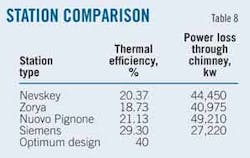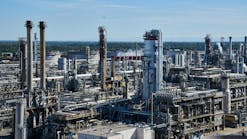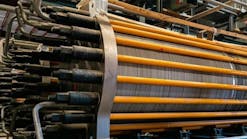COMPRESSOR OPTIMIZATION—1: Energy recovery guides natural gas pipeline system efficiency
View Article as Single page
Compressors
Investigating compressors revealed the following characteristics:
• Compressor 260-13-1. Installed in old Russian stations, real power consumption was higher than designed power consumption by 400-1,000 kw, growing as rpm's increased.
• Compressor PCL 802-3. Operates with Nuovo Pignone turbo compressors. Power consumption was 400-1,000 kw higher than designed and efficiency 5-10% lower.
• Compressor BCL 605. Also uses Nuovo Pignone turbo compressors. Power consumption is 200-1,300 kw higher than designed and the difference between designed polytrophic efficiency and operational efficiency 5-9%.
• Simner-design compressors. Used 0.5-1.5 Mw more power than designed. Operational efficiency in Sinner-design E compressors was 5-7% lower than designed polytrophic efficiency in most instances.
Scrubbers
Scrubbers are responsible for nearly 10% of compressor stations' energy loss. More than 40% of scrubbers were dirty (resulting in a 10-25 psi pressure drop) and nearly 10% were completely out of commission (resulting in >25 psi pressure drop). Pressure drop under optimum conditions is 5-10 psi.
Air coolers
Aspen-HTFS+ software-based simulation compared air cooler function with design parameters.
Researchers used designed gas flow conditions to compare air cooler efficiency with international standards. The actual pressure drop of 9.6 psi exceeded expectations of 8.5 psi.
Tested air coolers had a hairpin arrangement, with total output gas of the turbocompressor flowing into a common header and then being divided between air coolers by an input header before entering transformer tubes. Other air coolers have a straight arrangement, with total output gas of each turbocompressor directly entering an air cooler bank.
Pressure drops more rapidly in a straight configuration. Researchers found a 14.3 psi pressure drop in straight-designed air coolers. Using hairpin air coolers reduces pressure drop, decreasing gas consumption. Table 6 shows the effects of a reduced pressure loss in hairpin air coolers.Optimizing air cooler design in a straight arrangement reduces pressure loss even further (Table 7).
Savings potential
Identifying energy loss points allowed definition of potential savings and recovery. Energy savings possibilities included reducing:
• Energy loss from scrubber pressure drop.
• Energy loss from air cooler pressure drop.
• Electrical energy consumption in air coolers.
Potential energy recovery lay in reducing energy leaving compressor stations through the chimney. Energy captured by reducing pressure drop can be applied to transmission instead.
Table 8 shows the two parameters used in calculating energy savings and thermal recovery values.
Displaying 3/5
View Article as Single page




